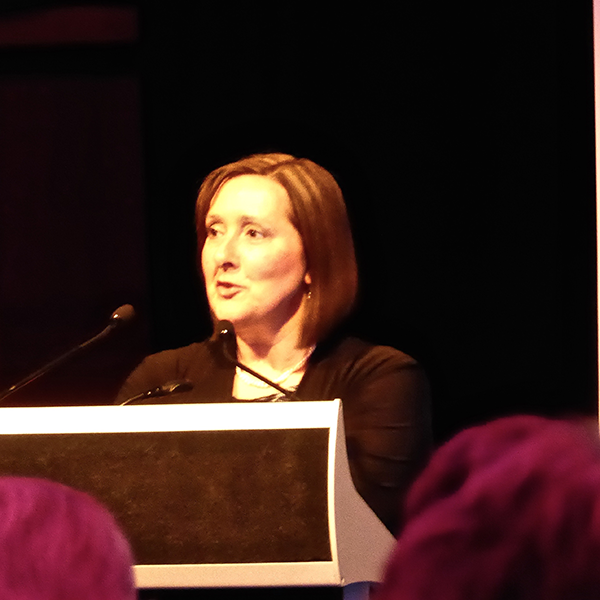Polio is a disability and health issue that goes largely unrecognised among many health practitioners. For a perspective on the challenges facing polio survivors in Australia, F2L spoke to Polio Australia national program manager, Mary-Ann Liethof (pictured) at the Post-Polio Conference, who acknowledged that there is little understanding about the late presenting effects amongst health care workers.
She said as polio sufferer’s age they do have more disability but it depends on the level of disability they had to start with. “If they did have a severe disability as a result of their polio in the early stages of their life they would probably have connected with the disability sector but most did not. They walk around without an issue but as they age there is evidence of muscle weakness and a whole host of issues that are impacting now on their physical ability.
“The excuse is often, you are getting older this is what happens. However, it is quite clear that the ageing problems of people who have had polio are totally different to the natural ageing concerns of the general population.”
At a national level, Polio Australia promotes awareness more in the health sector than the disability sector. “When polio survivors are looking for answers to their evolving condition they will go to their health practitioner, GP, physio or any number of allied health professionals as these are the people who need to work with them on their increasing disabilities. There is a disability component to it as well as a health component because polio is one of those areas where it is not one or the other, it is both.” As for the NDIS she said if people are under-65 years and at the higher end of the disability sector they may be eligible to enter the scheme. “Unfortunately as the majority of our polio survivors are over 65 they are not able to do so.”
Liethof said on one hand the conference has been a learning opportunity for polio survivors. “But what we really wanted to do was generate as much interest from the health sector who can take all the information back to their respective work places or hospitals and up-skill their own staff in recognising the late effects of polio.”
She said response from delegates was “overwhelmingly positive.” Dr Nigel Quadros, senior consultant in rehabilitation medicine at the University of Adelaide, has attended post- polio conferences in Europe and found the Australian event was, “equal if not better.” He is planning a systematic review followed by a clinical study on osteoporosis in polio patients. Elizabeth Lounsbury, chair of Post-Polio Canada, said “the conference flow was great with many interesting speakers – none I attended was less than informative.” Marmaduke Loke, from Dynamic Bracing Solutions USA, described the conference as “very successful and people learned valuable nuggets of information from every presenter.”
The last words were from Faith Love who travelled from the Gold Coast to attend the conference. The 76-year old was diagnosed with polio when she was eight years old. For her, the keynote lecture from Professor Antonio Toniolo from the University of Insubria Medical Centre in Italy was revealing. Research has shown that the polio virus stays dormant in the body, a fact she was unaware of. “Many polio survivors have had huge careers in those intervening years and survive the worst of it only to hit the wall with the later effects of polio,” she told F2L.
In retirement Love moved to Queensland for the warmth because: “as everyone knows polio wrecks your temperature control and I am very much better for having done that. At first I swam in the ocean which I think is a great healer – but finally I was unable to get up when the waves started to knock me over, so I had to give that away.” Her management regime includes swimming in a warm indoor pool which makes movement easier and taking a mild muscle relaxant. “Exercise is important but you must be careful not to overdo it.”
In his lecture, Professor Toniolo spoke about the progressive decline of physical strength in some poliomyelitis survivors, accompanied by intolerance to cold, chronic pain and other disabilities, a condition termed post-polio syndrome (PPS).

